The Nikon vs Canon debate is one of the hottest in photography. They are the two biggest brands and have soaring popularity after years at the top of the industry. But which brand is right for you?
There’s no definitive right or wrong answer to the question of Nikon vs Canon. They both produce fantastic cameras for photographers at all levels. But there are some differences that might sway you to one brand over the other.
And while there is no right or wrong answer, it is best to select the brand that suits you best from the start. Changing from Nikon to Canon or vice versa after you’ve already invested in one is an expensive pain in the rear.
This article looks at both brands in detail, covering their most popular products and the differences between them. By the end, you’ll have a good idea of whether you’re in the Nikon or Canon camp.
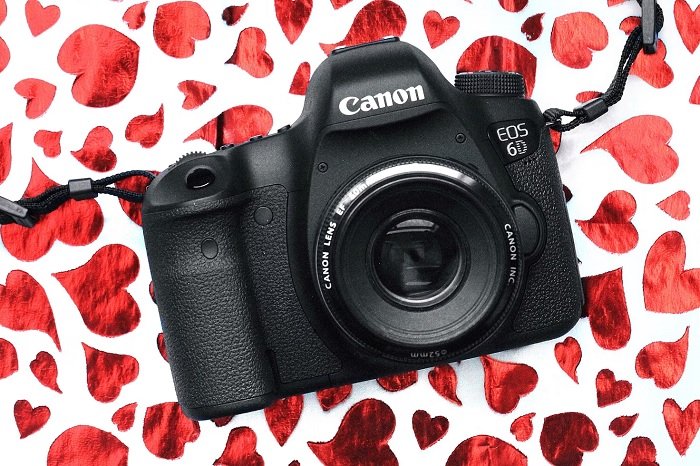
The Nikon vs Canon Debate
The debate comes from those photographers wholly devoted to one brand or the other. Canon and Nikon are the two most popular and widespread camera brands, so it’s natural that the most significant discussion is around these two photography giants.
In the golden age of film photography, the Nikon vs Canon debate was much less prominent. There were plenty of excellent cameras from a wide range of brands, and they all offered something different. Canon and Nikon were both big names, but they were not the stand-alone favorites.
But a lot has changed since we entered the age of digital photography. Now, the majority of photographers you see in the wild have a Canon or Nikon camera. And that’s true for photographers of every level. Both manufacturers have a wide range of camera models for amateurs, professionals, and everyone in between.
Canon and Nikon dominated the DSLR market so much few others could compete. But with DSLRs on the way out, Canon was the first of the two to move to mirrorless cameras. Nikon wasn’t far behind in making the transition, and now both dedicate their efforts in the mirrorless market.

Nikon vs Canon: The Cameras
Now we’ll get stuck into the meat of the debate by looking at the cameras from Nikon and Canon.
Both Nikon and Canon produce cameras for photographers at any level, which is one reason for their enormous popularity. They also moved away from DSLRs and now only produce mirrorless cameras.
However, there are some differences between their mirrorless camera lines. Sensor, features, and strengths all have differences you should be aware of. We’ll get stuck into these topics in the following sections, so you can find out which brand is best for you.
Sensors
Canon and Nikon both have crop frame (APS-C) and full frame camera models.
APS-C sensors are smaller than full frame ones. That means APS-C cameras often have a smaller image resolution full frame models, which is why APS-C are more commonly used by beginner and intermediate photographers.
Thanks to the larger sensor size, full frame cameras are more powerful in terms of resolution. These sensors allow for more megapixels, which gives you better picture quality. They also tend to have more advanced features and functions.
We also need to mention crop factor, something you experience when using a lens with a APS-C/crop-sensor camera. The crop factor adds to the lens’s level of magnification, increasing the focal length.
However, as Nikon and Canon APS-C sensors are a slightly different size, the crop factor values also differ. The crop factor of Nikon crop sensor cameras is 1.5x. For Canon, the crop factor is 1.6x.
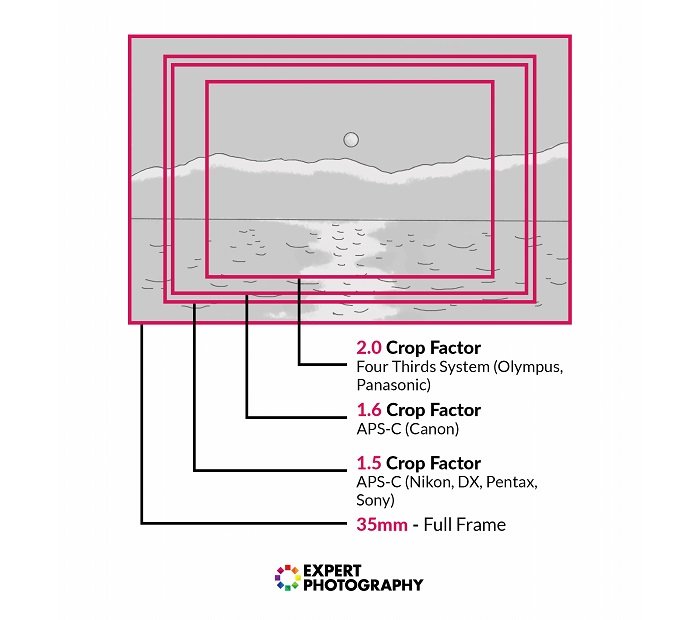
The crop factor means APS-C sensors give you better “magnification.” If you are a sports photographer, you can quickly turn a 100mm telephoto lens into a 150mm with a Nikon and a 160mm with a Canon body.
Nikon and Canon both have ranges of full frame cameras. They both have DSLR and mirrorless full frame models, although mirrorless machines are now the priority.
Full frame cameras tend to be aimed at the more experienced end of the market, with cameras for enthusiasts and professional photographers. They are more powerful than APS-C cameras, with higher MP counts and better video resolution. But with that extra performance comes a higher price tag.
Mirrorless Cameras
We are now very much living in the age of the mirrorless camera. And Canon and Nikon have the wide ranges of mirrorless models available. Canon has the R series of mirrorless camera and Nikon the Z series.
These R and Z models are some of the best in their class, serving everyone from absolute beginners to seasoned professionals.
Without the mirror mechanism found in DSLRs, mirrorless cameras are smaller and lighter. But they also have more advanced features and better multimedia capabilities. Some mirrorless models are geared towards video production just as much as photography.
We’ll take a closer look at Nikon and Canon mirrorless cameras. We’ve broken the discussion down into entry-level, intermediate, and professional to help you find the information you need.
Entry-Level Mirrorless Cameras
The Nikon Z50 has been a popular mirrorless camera with beginners for a few years. And that’s no surprise. It has a compact and lightweight body and gives you sharp 20.9 MP images from the APS-C sensor. It shoots fantastic 4K video footage, which is made easier thanks to a rotating touchscreen.
There’s little surprise it has been a popular choice with vloggers. But the Z50 has been on the market for a while and is in need of an upgrade. The Z50 II is expected to be released towards the end of 2023. But it has been a long time coming.
Canon’s challenger has been the Canon EOS R50. It’s similar in size to the Z50. But the Canon tops the Nikon in image resolution, boasting a 24.2 MP sensor. It also has Canon’s Dual Pixel CMOS autofocus system. And you get a 15 fps burst rate with the electronic shutter.
It’s another popular choice with video makers and vloggers. The R50 records 4K video at 30 fps. You can shoot faster frame rates for slow-mo videos in Full HD. And it also has a rotating touchscreen.
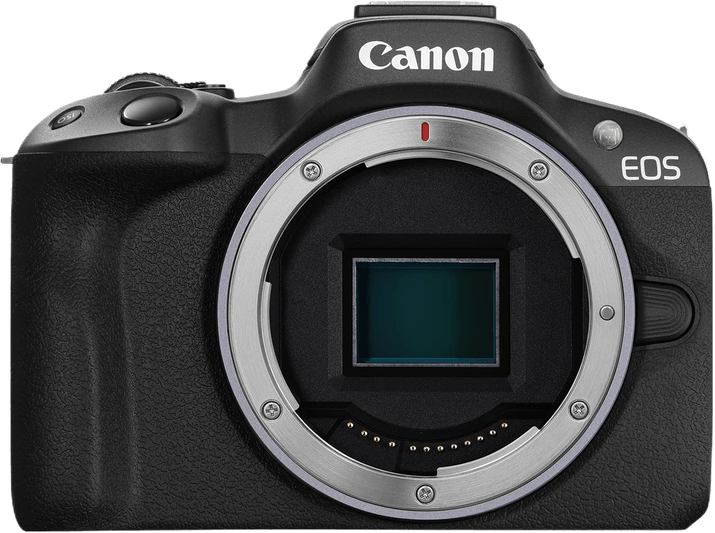
Canon has recently added to its entry-level camera arsenal with the Canon EOS R100. It’s another APS-C mirrorless camera. And this one is one of Canon’s most affordable cameras to date.
The low starting price does mean it’s missing a few features we’ve come to expect, like a tilting touchscreen. But it is still packed with excellent features beginners will love.
It has a more-than-decent 24.1 MP APS-C sensor. The Dual Pixel CMOS autofocus is excellent and even has eye-detection capabilities. And it has a fantastic electronic viewfinder that works just as well with video.
The R100 can record 4K videos, but the 4K footage is cropped. You’re better off recording in Full HD with a 60 fps frame rate. This gives you excellent footage that’ll look great on social media.
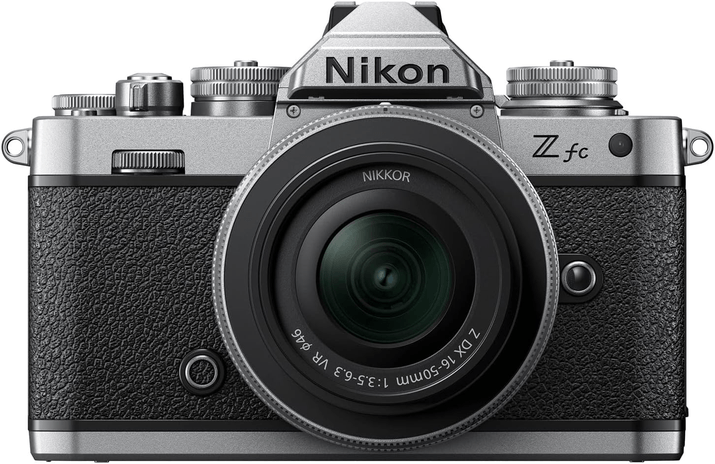
Another option for Nikon fans is the Nikon Z fc. This stylish camera has a retro design reminiscent of the film cameras of the analog era. But it’s not just about the looks. It delivers excellent results with a 20.9 MP sensor and 4K video recording.
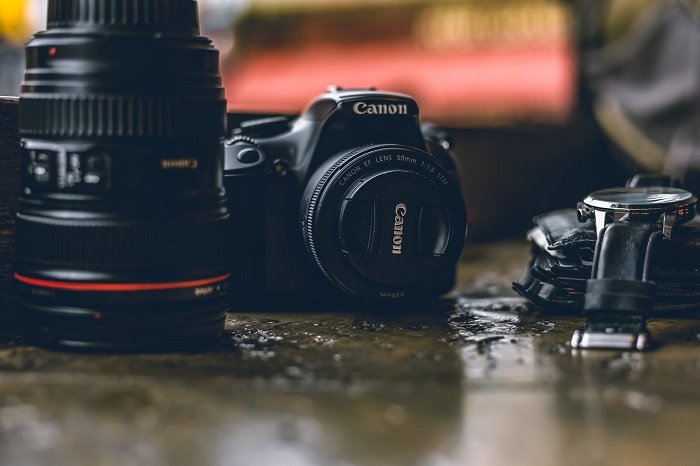
Intermediate Mirrorless Cameras
Photographers with a bit more experience will like the Nikon Z5. It’s a full frame mirrorless camera with Nikon’s trademark ergonomics. The 35mm sensor gives you an image resolution of 24.3 MP. That isn’t groundbreaking. But the images are excellent, and the larger pixels give you a better dynamic range.
The eye-detection AF and built-in image stabilization are other great photography features. And it’s a hybrid camera with video capabilities. You can record 4K at 30 fps. And there’s a 60 fps option when recording in HD. That makes it a fabulous all-rounder for multimedia enthusiasts.
If you can stretch your budget a bit further, the Nikon Z6 II is another top Nikon. The 24.5 MP resolution isn’t a bug jump up from the Z5. But the superior video features make it worth the higher price.
It’s a true hybrid camera. And you can record 4K video with a 60 fps frame rate. And the built-in image stabilization allows you to shoot from hand without a camera stabilizer. It also has all the necessary ports for external media devices.
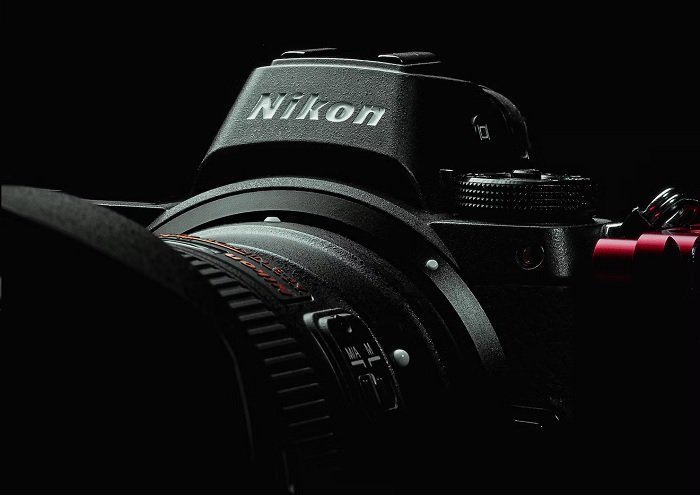
A similar camera from Canon’s catalog is the Canon EOS R8. It’s a full frame mirrorless with a 24.2 MP resolution. It’s incredibly lightweight and compact for a full frame machine. And it has image stabilization and Canon’s fantastic Dual Pixel CMOS autofocus system. It has eye detection and accurate subject tracking.
Like the Nikon Z5, the R8 has excellent video options. But the R8 tops the Z5 with its uncropped 4K video at 60 fps. That’s pro-level video production. And the body has all the necessary ports for external audio devices.
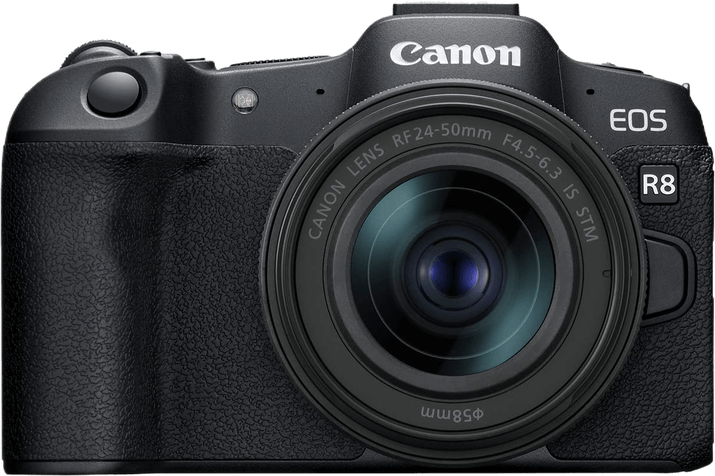
Professional Mirrorless Cameras
Nikon and Canon both cater to professional photographers. In fact, their cameras are so well-rounded, some models are used by professional videographers and multi-media producers.
The Canon EOS R5 is the perfect example. It’s Canon’s most powerful camera, with a full frame sensor that gives you 45 MP images. That’s staggering image quality.
And with the latest firmware, you can use the High-Resolution Shot mode. This composites several exposures to give you one 400 MP image. That’s truly sensational image production.
And with the R5, the video features are just as impressive. You can record videos with an 8K resolution. And that’s uncropped with a 30 fps frame rate. That’s cinema-quality video recording.
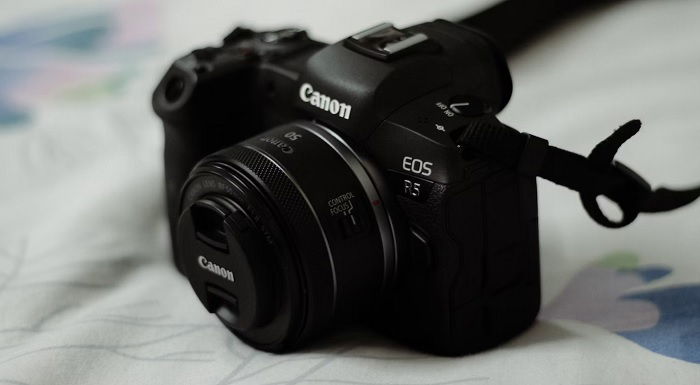
Nikon’s heavy hitter in the professional market is the Nikon Z9. With a 45.7 MP resolution, it edges out the Canon EOS R5 for image quality. There’s no High-Res Shot mode. But you do get a max burst rate of 30 fps at full resolution. That’s a phenomenal feature for sports photographers.
Like the R5, the Nikon Z9 gives you 8K cinema-quality video. And you can also record 120 fps slow-motion footage in 4K. That’s another dynamite feature for pro sports shooters.
It’s a big camera with a permanently attached battery grip on the bottom. But that’s because it needs the extra power to run the cutting-edge features.
The main problem with the Z9 was the availability. There were so few in circulation that no one could get their hands on one. But Nikon has increased production, and the Nikon Z9 is showing the world what it’s made of.

Key Camera Features
To take this investigation further, we’ll now look at some specific camera features to see how Nikon and Canon cameras differ. Examining specific features will help you find which cameras are a better fit for your photography.
We’ve already covered resolution and megapixels when looking at entry-level, intermediate, and professional cameras, so we won’t go into that again. Here we’ll look at features like autofocus, burst, and video.
Autofocus
Canon’s Dual Pixel Autofocus system is the best in the business. It delivers fast, reliable, and smooth focusing on all the R-series mirrorless cameras.
While many of the later DSLR models also had the Dual Pixel AF system, it wasn’t until the R series came along that Canon made big strides in this department.
Mirrorless cameras put a higher demand on autofocus systems, as they need quicker, more reliable subject detection and tracking. It also has to be able to hold and track focus while shooting in burst mode or when shooting video.
Canon met the challenge head-on, and all modern Canon users are impressed with the autofocus system. Of course, more basic cameras have a more basic version, and more high-end models have more advanced AF. But overall, the Dual Pixel system takes the cake.
That’s not to say Nikon’s AF system isn’t good. The advanced AF in the Nikon Z9 is staggeringly impressive, but the quality isn’t quite as consistent from model to model. Canon’s AF is more consistent and reliable throughout its entry-level and intermediate cameras.
Canon and Nikon cameras now have face and eye-detection AF in their mirrorless cameras. And not just the professional-level models. Whether you’re using the Canon EOS R100 or the Nikon Z50, you can enjoy accurate eye-detection autofocus. That makes portraits and event photography that much easier.
Burst Mode
Burst shooting modes are becoming increasingly popular with photographers at all levels. A fast burst has always been important to professional sports and wildlife photographers, but they are in demand by anyone buying a new camera. Burst shooting is now a common feature in portrait and fashion photography.
At the entry-level end, Nikon has the faster burst modes. The Nikon Z50 has an 11 frames per second (fps) burst, whereas the Canon EOS R100 only has a top speed of 6.5 fps. Beginners don’t usually need a super-fast burst, but the extra fps might sway new buyers if they’re into sports or action photography.
When we get to the intermediate level, Canon starts to establish a clear lead. At this level, Canon mirrorless cameras have the option of a mechanical or electronic shutter. For example, the Canon EOS R8 has just a 6 fps burst with the mechanical shutter. But switch to the electronic shutter and you get a rapid 40 fps.
If we take the Nikon Z6 Mark II as a comparison, it only has a max burst of 14 fps. There’s no electronic shutter option to give you a faster continuous shooting speed.
However, when we compare the pro models, Nikon comes out on top once again. The Z9 has a max burst of 30 fps. That’s slower than the R8, but that’s 30 fps with 46 MP images. And when we compare the Canon EOS R5, which has a 45 MP sensor, the burst only reaches 20 fps with the electronic shutter.
Video Recording
We’ve come to expect 4K video recording in every mirrorless camera. And as far as Nikon and Canon are concerned, they deliver in that regard. Even affordable entry-level cameras like the Canon EOS R100 have 4K video recording capabilities.
However, the R100 only has a 24 fps frame rate for 4K. This means fast-moving subjects can look jerky. In comparison, the Nikon Z50 has 4K at 30 fps, a combination that has now become the standard for mirrorless cameras.
The 4K/30 fps combo is common across intermediate models of both brands. However, the Canon R8, R6, and the Nikon Z6 II all have a 60 fps frame rate in 4K. That doesn’t increase the video resolution, but it does give you super-smooth footage. That makes them more than just vlogging cameras.
For a long while, the Canon EOS R5 was the best video camera from either manufacturer. With incredible 8K video resolution, it gives you cinema-quality footage. Nikon have now caught up and the Z9 also has impressive 8K video capabilities.
The R5 and Z9 both has 10-bit 4:2:2 color sampling, so video footage has vibrant, true-to-life colors.
Connectivity and Wi-Fi
All Nikon and Canon mirrorless cameras have wireless connectivity options. Both Z and R-series cameras have Bluetooth, so you can connect to smartphones. But they also have built-in Wi-Fi outputs, which allow you to connect your smartphone directly to your camera to transfer media.
However, in order to transfer media, your smartphone needs the partner app. Canon users will need the Canon Camera Connect App and Nikon users the SnapBridge app.
In theory, using the Wi-Fi connectivity and connecting apps is an easy way to share media between devices. But in reality, things are not so simple. Users have long complained about both apps, and there’s still a feeling that these top manufacturers can produce better apps.
Canon’s app is hit-and-miss with its users. More unreliable than downright terrible. But Nikon’s SnapBridge, on the other hand, is universally derided.
For two leading tech brands, the poor quality of their apps is a disappointing surprise. Canon’s does seem to be getting better with time, but Nikon’s app is still drawing the ire of its users. We will all be looking for improvements in the future.
Camera Design
Some photographers might pretend that a camera’s look doesn’t matter. But I think deep down, many of us have a soft spot for stylish cameras.
In terms of design, Canon’s R cameras are a continuation of their EOS DSLRs. They are lighter and more compact, and they are slightly more angular. But overall, they are clearly cousins.
Nikon’s mirrorless cameras have more varied designs. The Nikon Z5 and Z6 II are slimmer with sharper angles than the old DSLRs, but they are not dissimilar. And the Z9 looks a lot like the old pro-level Nikon DSLR cameras.
The Nikon Z50 has a more modern appearance, being compact and angular. It’s a bit more uniquely mirrorless. But the major departure comes with the Nikon Z fc. It’s a beginner/intermediate camera with a retro look that echoes the days of analog cameras.
You now have the Nikon Z f, a full frame version that’s just as stylish. Nikon is capitalizing on the renewed popularity of film photography, and both the Z fc and Z f are becoming popular with street photographers.
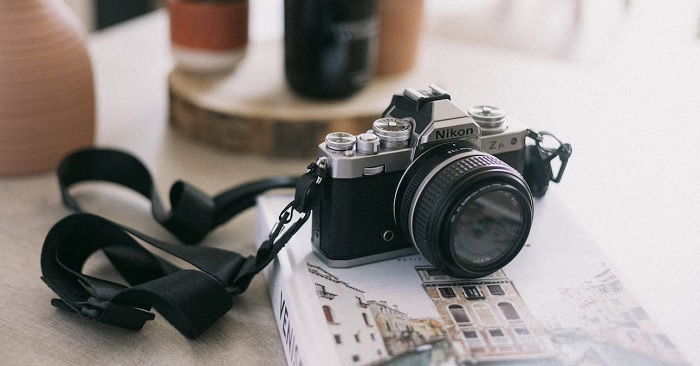
DSLR Cameras
Be warned, this is one of the saddest sections of the article because there are so few DSLRs still available. There’s no doubt DSLRs are dying. But it’s worth mentioning the few that remain on the market.
DSLRs ruled the digital camera space for nearly two decades. And Nikon and Canon were both pioneers in that field. They were the two leading brands in that field. And Nikon and Canon DSLRs were the most popular cameras with photographers at all levels.
But the end is approaching for DSLRs. Both Canon and Nikon have discontinued all their DSLR lines. Everything from beginner to professional DSLRs are no longer in development.
When it came to entry-level DSLRs, the Nikon D3500 was at the top of every list. It was easy to use, with special guide modes for absolute beginners. The 24 MP APS-C sensor gave you gorgeous images. And it was affordable, even with a kit lens included.
But as of July 2022, Nikon discontinued the D3500. You can still buy it refurbished or second-hand. But that announcement signaled the end of Nikon’s entry-level DSLR range.
Canon, on the other hand, still has one great DSLR option for beginners. The Canon EOS Rebel T8i is a fantastic camera with high-quality photo and video features. It’s compact, lightweight, and affordable. And you can still buy it brand new.
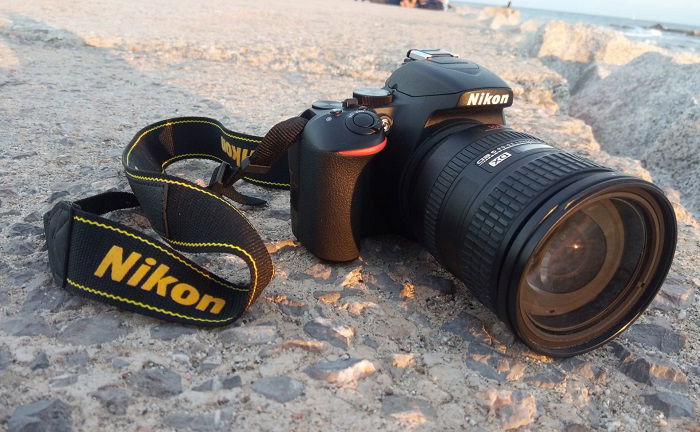
When we come to enthusiast-level DSLRs, Canon remains on top. The Canon EOS 90D is still impressive for an APS-C camera. The sensor gives you an incredible 32 MP resolution. That’s more than many full frame cameras. And with 4K recording, it’s one of the best DSLRs for video.
The Nikon D850 used to be the best full frame DSLR for professionals. It had a powerful 45 MP sensor, 4K video, and 8K time-lapse video features. You can still buy it new, but stocks are dwindling. And once they are gone, they are gone for good.
The Canon EOS 6D Mark II was the closest Canon equivalent. It didn’t quite have the raw power of the D850. It only has a 26.2 MP sensor. But it was renowned for its reliability and all-round quality. Canon still has a few 6D Mark IIs available new. But that won’t be for long.
Nikon vs Canon—Lens Mounts and Lenses
One of the biggest reasons why Canon and Nikon are so popular is their lenses. Both brands make industry-leading glassware. And they have extensive catalogs of lenses for every type of photography you can imagine.
Lenses for DSLR Cameras
Canon’s EF range goes back to 1987. And EF lenses are compatible with their DSLR camera models. If you’re a Canon DSLR user, you have an incredible amount of lenses to choose from.
Likewise, Nikon’s F-mount lenses for their SLR cameras began in 1959. That means you have a long list of photography equipment that would still work on your modern digital camera.
The main difference between Canon EF and Nikon F lenses is the autofocus. With Canon, all the EOS lenses have autofocus. But only Nikon AF-S lenses have autofocus.
It is also worth noting that even non-AF-S lenses work on Nikon DSLRs, but you have to focus them manually.

Nikon removed the autofocus motor from their entry-level DSLRs to keep their cameras smaller. This means you can’t use autofocus from older Nikon AF-S lenses if you have an entry-level DSLR.
In contrast, Canon has always put autofocus motors in the lenses, not the bodies. That means you get to use older lenses with most camera bodies.
Canon uses two main types of autofocus motors in their lenses. The lenses at he budget end of the spectrum use the Stepping Motor (STM). And the more advanced ones have the Ultrasonic Motor (USM), which is faster and quieter.
You can read our full article on Canon USM vs STM lenses if you need more information.
Lenses for Mirrorless Cameras
As we are well into the mirrorless camera era, both brands now have separate lines of mirrorless lenses.
Canon RF lenses are compatible with their line of mirrorless R-series cameras. This line doesn’t have the extensive catalog of EF lenses. But Canon is producing new RF lenses all the time. You can find one for pretty much any genre of photography.
Nikon mirrorless cameras have a Z lens mount and use Z-series lenses. Like Canon, Nikon doesn’t have the same extensive number of lenses for their mirrorless cameras as they do for DSLRs. But the list of Z lenses is growing all the time, and the lens quality is exceptional.
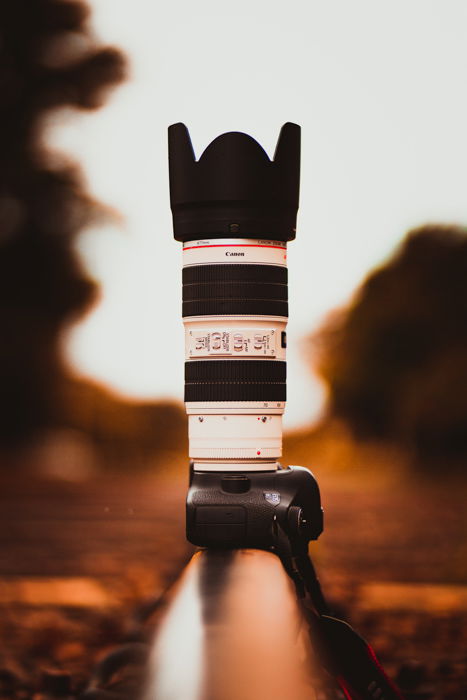
Lens Adaptors
One problem with changing from a DSLR to a mirrorless system is that you have a collection of lenses that are not compatible with the new camera. EF lenses don’t fit RF-mount cameras, nor do AF lenses fit Z-mount cameras.
There is, however, a solution to this problem: Lens adaptors.
Lens adaptors allow to use DSLR lenses with mirrorless cameras. There’s a Canon EF – RF adaptor and a Nikon AF – Z adaptor, so both manufacturers have the same solution to this problem.
Third-party adaptors are available, but we recommend the Canon or Nikon-branded options. They are more reliable and barely affect lens quality.
Lens adaptors are only useful if you can changing from DSLR to mirrorless but sticking with the same brand. They’re not much use if you’re switching brands or buying your first camera system.
Third-Party Lenses
Nikon and Canon users have an even wider selection of lenses to choose from when you include third-party lenses. Manufacturers like Samyang, Tamron, and Tokina all make good quality, affordable lenses for Canon and Nikon cameras.
The best third-party manufacturer is has to be Sigma. Sigma lenses are excellent in terms of quality, but they’re often considerably more affordable then Canon or Nikon brand lenses.
Sigma’s three main lens lines, Art, Sports, and Contemporary, all have lenses available for Nikon F and Canon EF mounts. That gave you dozens more lens options for your Nikon or Canon DSLR camera.
However, while Sigma started producing Z-mount lenses for Nikon mirrorless cameras early on, they have only recently started producing RF lenses for Canon mirrorless models. That means there are far more Sigma Z-mount lenses than Sigma RF-mount lenses. More RF lenses are on the way, but Nikon users still have the better selection.
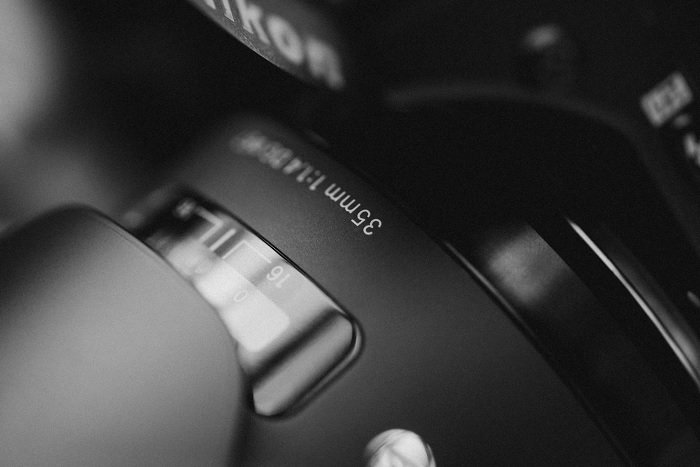
The Best Nikon and Canon Lenses
It’s hard to separate the two brands in the lens category. They both make exceptional lenses for all types of photography.
From 50mm primes to telephoto zooms, Canon and Nikon have every base covered. They have popular classics like the 24-70mm lens for DSLR and mirrorless cameras, and they have specialist options like macro and portrait lenses.
Canon has a two-tier grading system for their lenses, which is applied to both EF and RF lenses. The lower tier are their standard, more affordable lenses.
The upper-tier L-series lenses are their more high-performance, premium-quality options. They have an L after the maximum aperture in the lens title to denote they are of the higher class.
Nikon had no such tier system with their F-mount lenses for DSLR cameras. But they have introduced a new grading system for their mirrorless Z-series lenses. The better, pro-standard lenses have an S in the title. That means Nikon Z S lenses are the superior class.
There’s no way to separate the two brands in the lens category. Even their affordable entry-level lenses are top quality, but they also offer exceptional pro-grade lenses too. Both companies also have lenses for every photography niche from real estate to wildlife.
To give you a better understanding of the lenses Nikon and Canon offer, here are some of our best lens posts for both brands.
Best Nikon Lenses
- Best Nikon Wide-Angle Lenses
- Best Nikon Portrait Lenses
- Best Nikon Z Lenses
- Best Nikon Telephoto Lenses
- Best Nikon Prime Lenses
- Best Nikon S Lenses
- Best Nikon 24-70mm Lenses
Best Canon Lenses
- Best Canon RF Lenses
- Best Canon Lenses for Portraits
- Best Macro Lens for Canon
- Best Wide-Angle Lens for Canon
- Best Canon L Lenses
- Best Canon 24-70mm Lenses
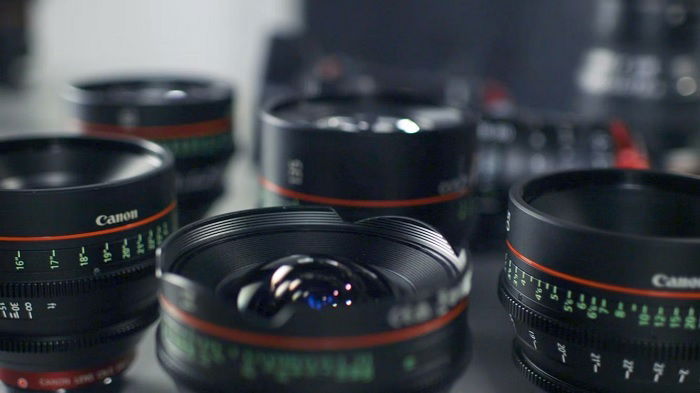
Conclusion
As we’ve seen, the Nikon vs Canon debate is a difficult one to call. There’s not much between the two brands. They both have a long and storied history and continue to make exceptional cameras at all levels. They also produce some of the best lenses on the market.
Beginners can go for Nikon or Canon without fear of regretting their choice in the future. They can also pick a more advanced camera from either manufacturer. And Nikon and Canon have professional cameras pushing the boundaries of what’s possible in digital cameras.
The only real separation has come since the switch to mirrorless cameras. Canon was the first to react and made a quicker transition. And that means they have more mirrorless camera options. They also have the better features in their mirrorless models, with Nikon lagging behind on things like autofocus, video, and Wi-Fi connectivity.
But Nikon is not far behind Canon. Its catalog is growing all the time, and, except for the mobile app, their features are improving all the time.
When it comes to Nikon vs Canon, there’s no wrong answer. They are two of the biggest brands for a reason. And they keep delivering what photographers want and need. Nikon and Canon are both fantastic. And while Canon comes out on top, Nikon is not a bad choice either.

